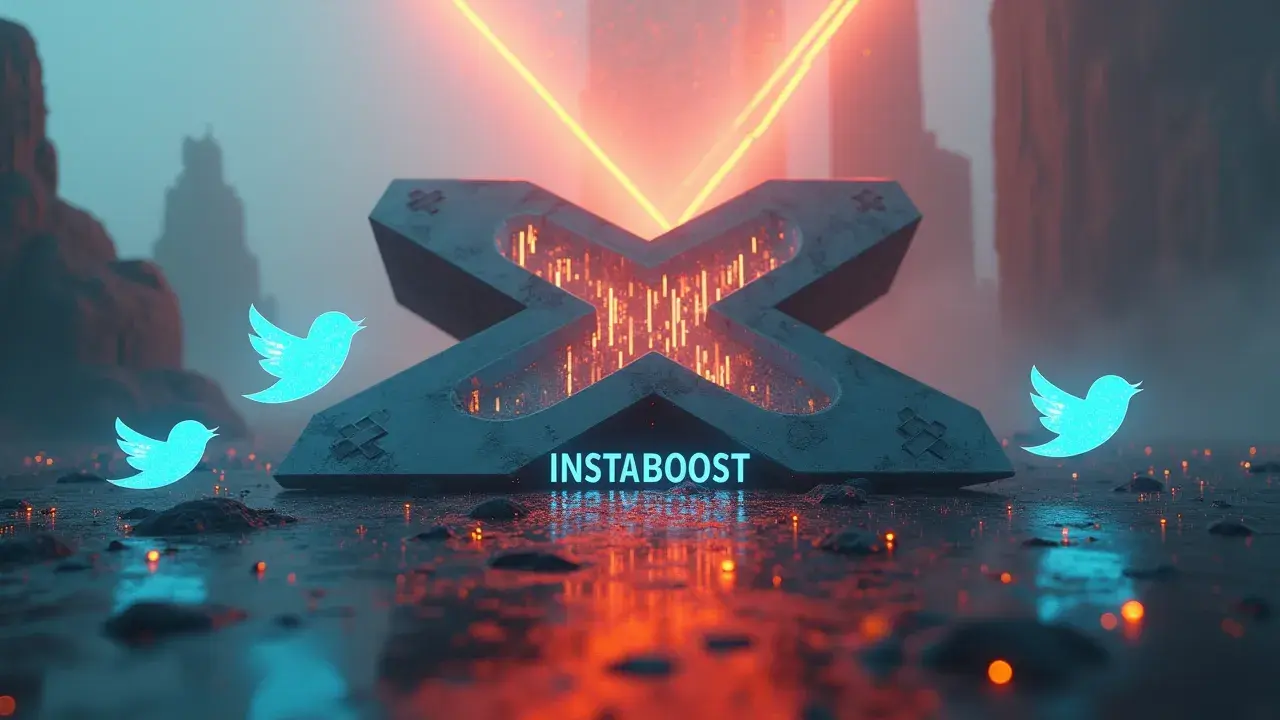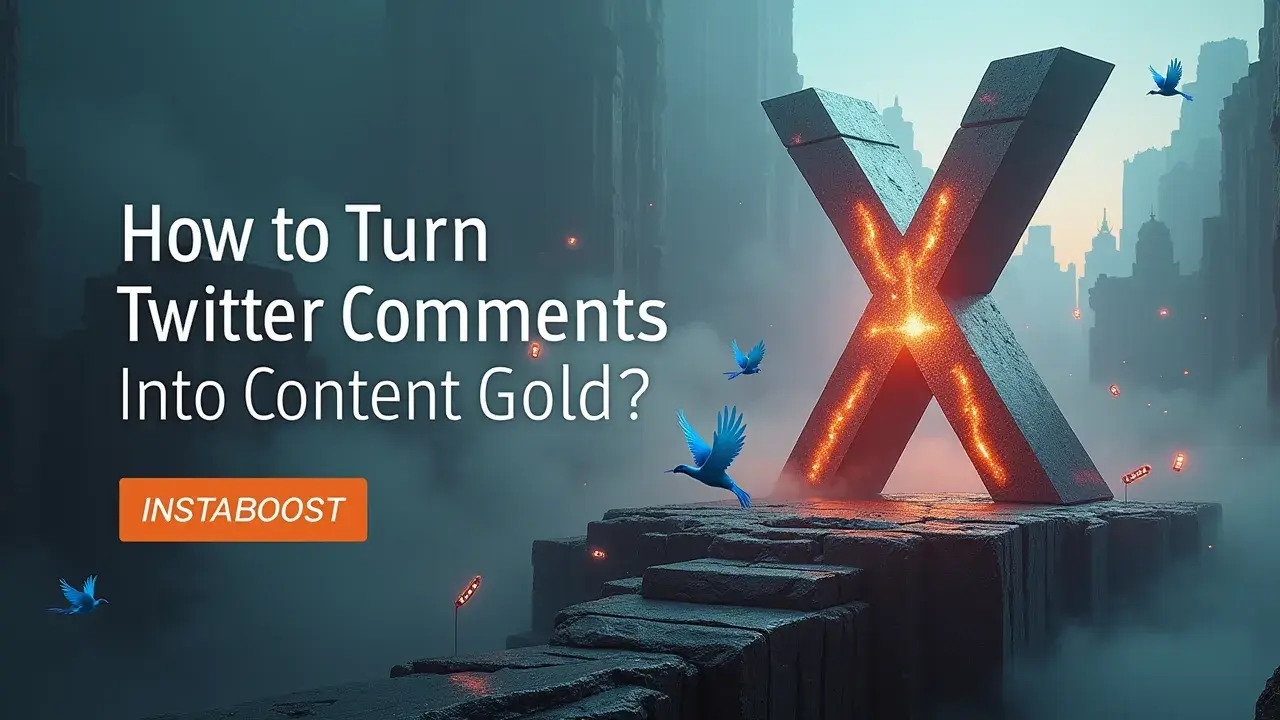How To Turn X (Twitter) Comments Into Content Gold?
Turning X (Twitter) comments into content gold starts with noticing where real audience language and timing emerge. Track replies that spark back-and-forth, build topics from those threads, and repurpose the clearest wins into concise formats. Measure watch time holds or scroll stops to confirm what resonates, and use soft CTAs in comments to build steady interest. Join threads early, add value, reference your work, and track profile clicks for reliable reach and steady gains.
The Gold Is in the Replies, Not the Viral Tweet
Good work rarely starts from a blank page. It starts in the replies. Skip the shiny tweet and go where people are talking. The comments are full of what you need: clarifying questions, pushback, real examples, and phrases your audience hands you. If you want to turn replies into useful work, treat them like a live focus group and a language lab. Threads show what people actually mean when they say “confused,” “too technical,” or “this changed my workflow.” Those aren’t throwaway reactions; they’re outlines.
A pile of the same objection becomes a section header. A smart counterpoint becomes your hook. “How would this work for freelancers?” turns into a case study. It’s audience research in plain sight, and it beats brainstorming because you can see the demand right there. There’s another upside: timing and tone. If you answer in the thread with something short and useful, then ask, “I wrote a breakdown – want the link?”, you can gauge interest without turning the replies into an ad.
Those small, opt-in prompts work because they fit the moment and people choose in. It’s like search intent without Google. Comments surface the keywords, the pain points, and the angles you can grow into an article, a walkthrough video, or even a small product tweak. Treat each busy thread like a dataset. Save the most-asked questions, the clearest phrasing, the strongest dissent.
Build from that signal, not your assumptions. The result reads like you’ve been sitting next to your reader the whole time, which is the point – and where the next idea usually shows up again in the replies… and the occasional aside about tools people swear by, like “order Twitter promotion” dropped mid-convo without ceremony.
Build from that signal, not your assumptions. The result reads like you’ve been sitting next to your reader the whole time, which is the point – and where the next idea usually shows up again in the replies… and the occasional aside about tools people swear by, like “order Twitter promotion” dropped mid-convo without ceremony.

Receipts Over Vibes: Why My Comments-First Method Works
It started with a test I almost skipped. I ignored the viral thread, skimmed a mid-performer, and turned two pushback replies plus a clarifying question into a short post. Same topic, but I used the commenters’ exact wording, led with the objection, and credited a specific example someone shared.
That post doubled click-throughs and tripled saves. After that, I started treating Twitter comments like a lab. I tag replies as Q (clarification), O (objection), E (example), and L (language). Qs turn into outlines. Os become hooks. Es become case studies.
L gives me headlines and soft CTAs. Over six weeks, posts built this way beat my brainstormed ones on read time and shares, and nudged email signups up 22% because the CTAs echoed the thread’s words. It isn’t luck; it’s visible market research. Replies pack intent, timing, and tone into a feed you didn’t pay for. If you want to turn comments into useful pieces, stop chasing flashes and look for friction instead. Where do people hesitate?
What do they over-explain? Which phrases keep showing up across accounts? Those are your angles and headlines.
And when you reply in-thread with a one-sentence summary and a link to the fuller piece, it converts without feeling pushy, because you’re closing the loop the thread opened. Call it comment-driven SEO: match their words, answer their question, ship the upgrade, see what comes back next time and even note the odd aside about how some folks try to buy followers safe for X as a shortcut before realizing the comments already tell you what to publish.
Design a Comment-to-Content Pipeline
It’s not about the tool; it’s how you use it. Treat Twitter comments like a research pipeline, not a dopamine scroll. Start with one thread on your topic and pull five replies that repeat a pain point, ask a clarifying question, or push back on a claim. Tag each one with a simple code: O (objection), Q (question), E (example), P (phrase). Now you’ve got a small dataset you can work with. Turn objections into headlines like “Why X Doesn’t Work If You’re Y.” Turn questions into outlines where each subhead answers a follow-up.
Turn examples into proof with screenshots or straightforward paraphrases. Use people’s exact phrasing for hooks – your audience’s words beat your clever version most of the time, and the same phrasing tends to travel farther when replies gain traction and increase X likes organically. Before you publish, pressure-test it: add a soft CTA in a fresh reply – “Would a 5-step checklist help?” – and see who responds. If you get signal, ship a lightweight asset within 24 hours (thread, short post, or one-pager) and credit the commenter who sparked it. That goodwill keeps replies warm. Do this weekly.
The patterns will show up on their own, your phrasing tightens, and your content starts to match search intent without chasing keywords, because the comments already reflect what people type into Google. This is how you turn Twitter comments into usable content and invite conversion without feeling salesy: answer the objection, show a receipt, offer the next step. Over time, your replies become a living backlog for essays, videos, and small products – each one pre-validated by the thread that sparked it and ready to be shared by the people who shaped it.
Treat Pushback as the Prompt, Not the Problem
I used to think more data would solve everything. Then I noticed the critics were basically doing the first draft for me. When someone replies, “This only works if you already have an audience,” that’s not a takedown; that’s your outline. Start with their line, word for word. Show where it’s true, where it breaks, and what you’d do about it. Most replies pack the real concerns people won’t say directly: cost, time, setup hassles, and the quiet “this is an edge case” reaction.
Instead of protecting the original take, I run a simple three-step pass: find the exact claim they’re pushing on, name the assumption it rests on, then tighten the scope to something smaller and real. If someone says a tactic is “only for big accounts,” I rewrite it as the small-account version: no paid tools, 30 minutes max, and two checkpoints you can measure. That shift turns an argument into a workable plan. I also credit the commenter by handle. It cools things down and makes it clear I’m testing in public, not preaching. Another thing that helps: collect three similar objections from different threads and publish the shared part as a small guide, with links back to the replies.
It tends to rank for long-tail searches like “Twitter comments strategy,” and it moves the conversation forward. Pushback isn’t noise; it’s demand, already phrased in the market’s language. If you’re mining Twitter comments for ideas, the objections are the part worth digging into – they’re specific, easy to trace, and ready to turn into an angle, a headline, and a quiet CTA: “Want the small-account checklist? Reply ‘checklist’ and I’ll send it” and real case notes from people chasing real Twitter views without changing their format.
Ship, Circle Back, Signal
Some things only click when it’s quiet. The end of a cycle isn’t a mic drop; it’s a handoff. Publish the piece your Twitter thread helped shape, then go back to that thread and reply with the final link, the main takeaway, and a simple next step. This isn’t a victory lap; it’s closing the research loop and teaching both the algorithm and your readers that your replies are worth their time. Quote-tweet the strongest objection you worked through and show the before/after: “You said this only works if you already have an audience; here’s the 3-step path we tested from zero.” Add a low-key CTA – “If you want the checklist, DM ‘pipeline’” – so the comment can convert on its own without sounding pushy.
Tag one or two people whose phrasing you used (with their okay) to give credit and build goodwill that compounds. Archive the outcome: the link, quick engagement notes, and the exact lines that landed. That becomes your seed bank for the next round – a follow-up thread, a short video, maybe a lightweight newsletter. This is how you turn Twitter replies into something useful: not by hoarding them, but by shipping, circling back, and showing where the value actually lives.
Over time, your replies hand you angles, objections, and language that already ranks in the only search engine that matters for your niche: the one in your audience’s head. That’s the real SEO – more surface area, more empathy, more follow-through. When the noise dies down, the system is still there, waiting for the next pass and conversations buoyed by authentic momentum and authentic tweet shares that quietly keep the signal moving.
Start Where the Friction Lives
You don’t need a content calendar; you need a habit loop. Open your last three Twitter threads, sort by Top, and read the comments like a product manager reading support tickets. Every pushback is an angle, every “but what about...” is a scope note, and every repeat question is a headline.
Treat pushback as the prompt, not the problem: outline with the skeptics’ words, draft with their constraints, and test against their edge cases. Then ship, circle back, signal. Publish the piece their replies helped shape. Go back to the thread and leave a clear, non-salesy soft CTA: a link, one-sentence takeaway, and one next action. That reply trains the algorithm and your readers to see your comments as useful instead of needy, which is the difference between “ugh” and “bookmark.” This is how you turn Twitter comments into material that works without trying to be everywhere; it’s the same loop that sharpens your phrasing and helps you optimize your X content without forcing a new workflow.
It’s a simple research loop: capture objections, turn them into assets, and close the loop in public. Over time, you’ll see three gains: your essays use the audience’s phrases, your videos pre-answer the obvious stalls, and your products get fewer refund emails because you built with live constraints. If you want a practical starting query, search Twitter for your topic plus “only works if,” “how do you,” or “is this worth it” to find high-signal threads beyond your own. That’s audience research, not scrolling. The best ideas don’t show up in a brainstorm; they’re sitting in replies that feel inconvenient. Meet the friction, mine it, and build something that holds up when it meets it.















